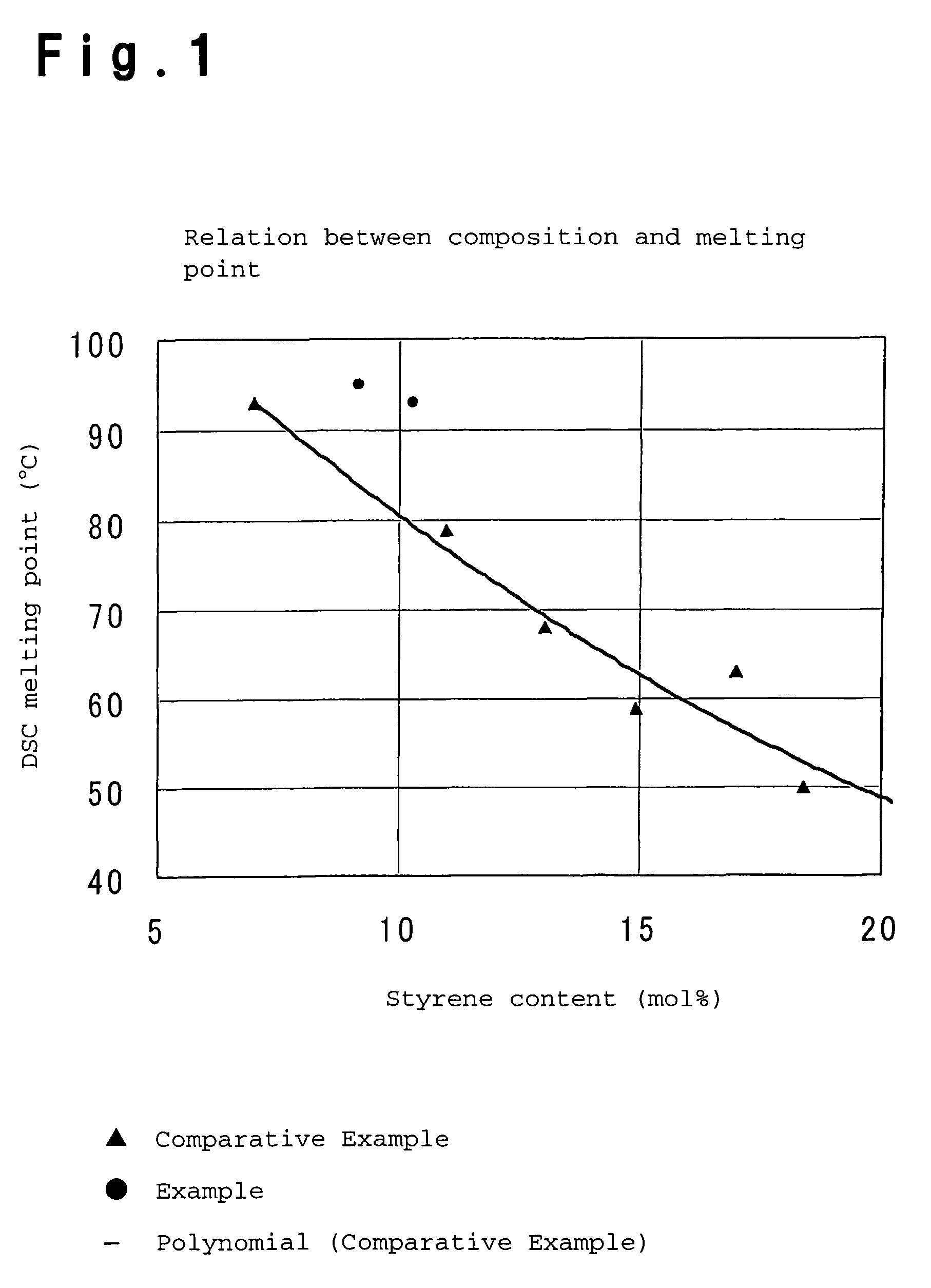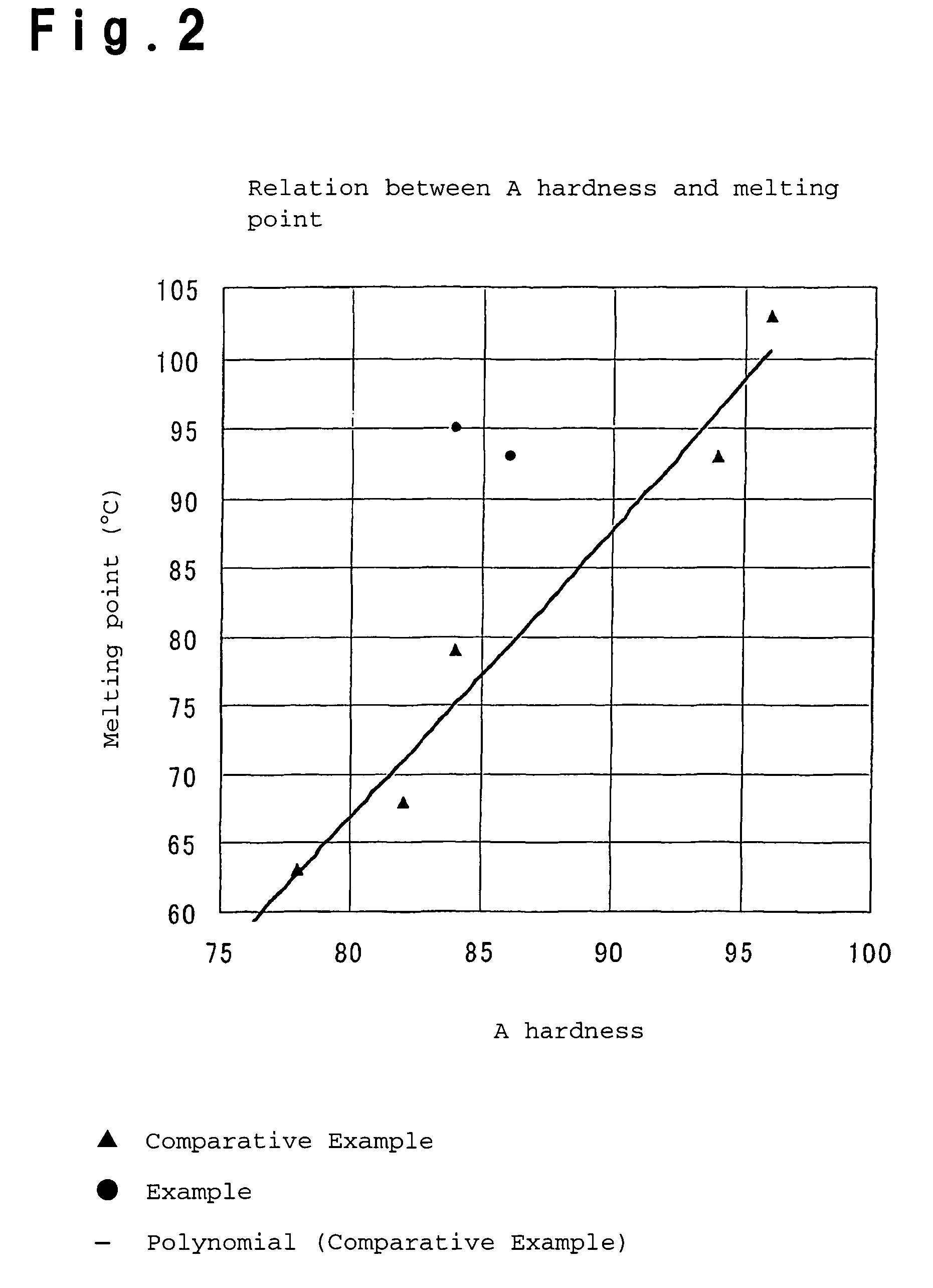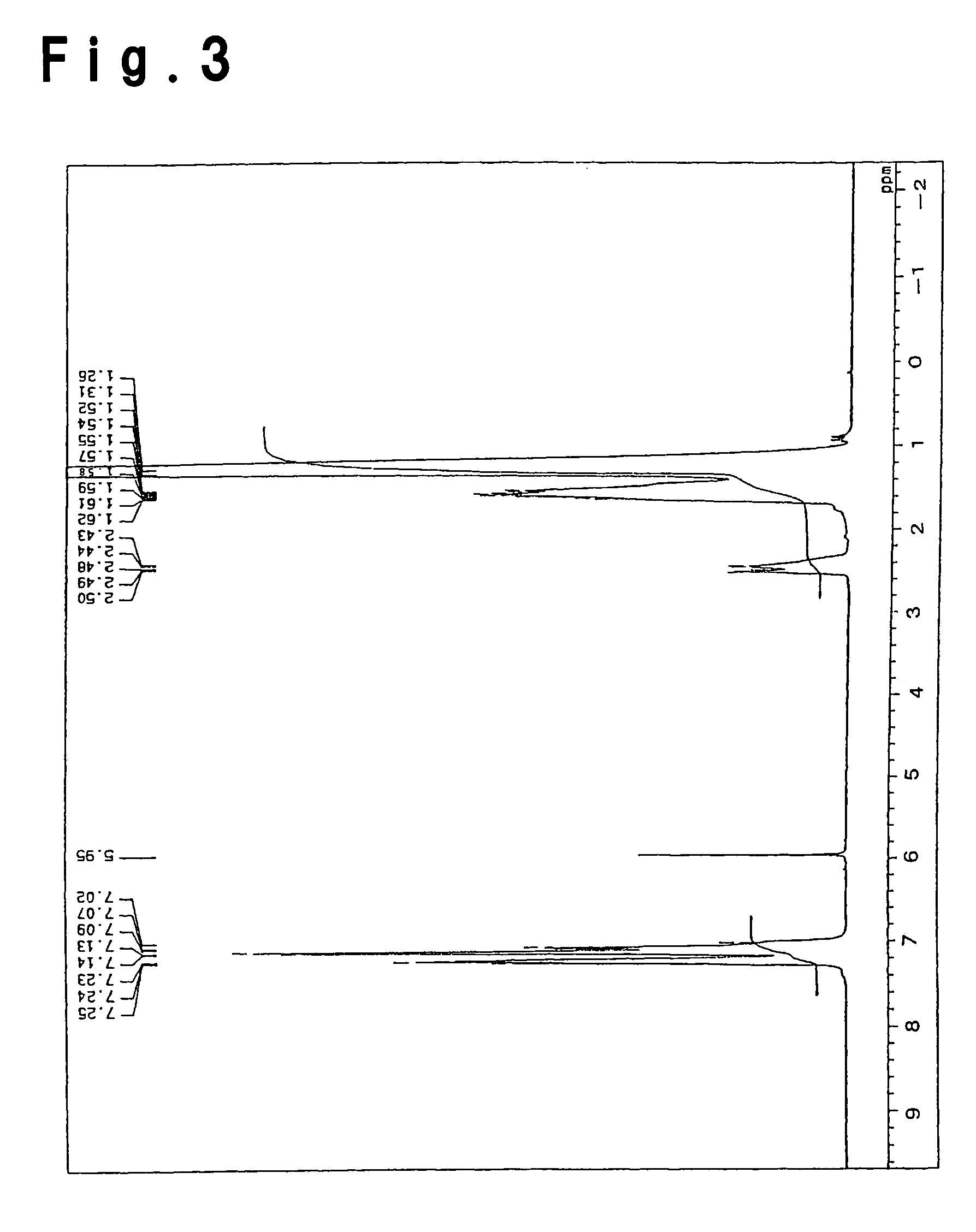Process for producing olefin/aromatic vinyl copolymer
- Summary
- Abstract
- Description
- Claims
- Application Information
AI Technical Summary
Benefits of technology
Problems solved by technology
Method used
Image
Examples
example 1
Preparation of an Ethylene / Styrene Copolymer
[0162]Polymerization was carried out by means of an autoclave having a capacity of 10 L and equipped with a stirrer and a jacket for heating and cooling.
[0163]4,400 ml of cyclohexane and 400 ml of styrene were charged and heated and stirred at an internal temperature of 50° C. About 200 L of nitrogen was bubbled to purge the interior of the system. 8.4 mmol of triisobutyl aluminum and 8.4 mmol, based on Al, of methyl alumoxane (PMAO-3A, manufactured by TOSOH AKZO K.K.) were added, the internal temperature was raised to 70° C., and ethylene was immediately introduced. After the pressure was stabilized at 0.6 MPa (5 Kg / cm2G), from a catalyst tank installed above the autoclave, about 50 ml of a toluene solution having 8.4 μmol of rac-dimethylenebis(4,5-benzo-1-indenyl)zirconium dichloride and 0.84 mmol of triisobutylaluminum dissolved therein, was added to the autoclave. Polymerization was carried out for 20 minutes while maintaining the inte...
example 2
[0165]Employing the same polymerization apparatus as in Example 1, 4,400 ml of toluene and 400 ml of styrene were charged. About 200 L of nitrogen was bubbled to purge the interior of the system and the polymerization solution at an internal temperature of 70° C. 8.4 mmol of triisobutyl aluminum and 21 mmol, based on Al, of methyl alumoxane (PMAO-3A, manufactured by TOSO AKZO K.K.) were added, and ethylene was immediately introduced. After the pressure was stabilized at 0.25 MPa (1.5 Kg / cm2G), from a catalyst tank installed above the autoclave, about 50 mL of a toluene solution having 8.4 μmol of rac-dimethylmethylenebis(4,5-benzo-1-inenyl)zirconium dichloride and 0.84 mmol of triisobutyl aluminum dissolved therein, was added to the autoclave. Polymerization was carried out for 48 minutes while maintaining the internal temperature at 70° C. and the pressure at 0.25 MPa. At this stage, the amount of ethylene consumed was about 150 L in a standard state. Then, ethylene was introduced,...
PUM
| Property | Measurement | Unit |
|---|---|---|
| Temperature | aaaaa | aaaaa |
| Temperature | aaaaa | aaaaa |
| Weight | aaaaa | aaaaa |
Abstract
Description
Claims
Application Information
 Login to View More
Login to View More - Generate Ideas
- Intellectual Property
- Life Sciences
- Materials
- Tech Scout
- Unparalleled Data Quality
- Higher Quality Content
- 60% Fewer Hallucinations
Browse by: Latest US Patents, China's latest patents, Technical Efficacy Thesaurus, Application Domain, Technology Topic, Popular Technical Reports.
© 2025 PatSnap. All rights reserved.Legal|Privacy policy|Modern Slavery Act Transparency Statement|Sitemap|About US| Contact US: help@patsnap.com



